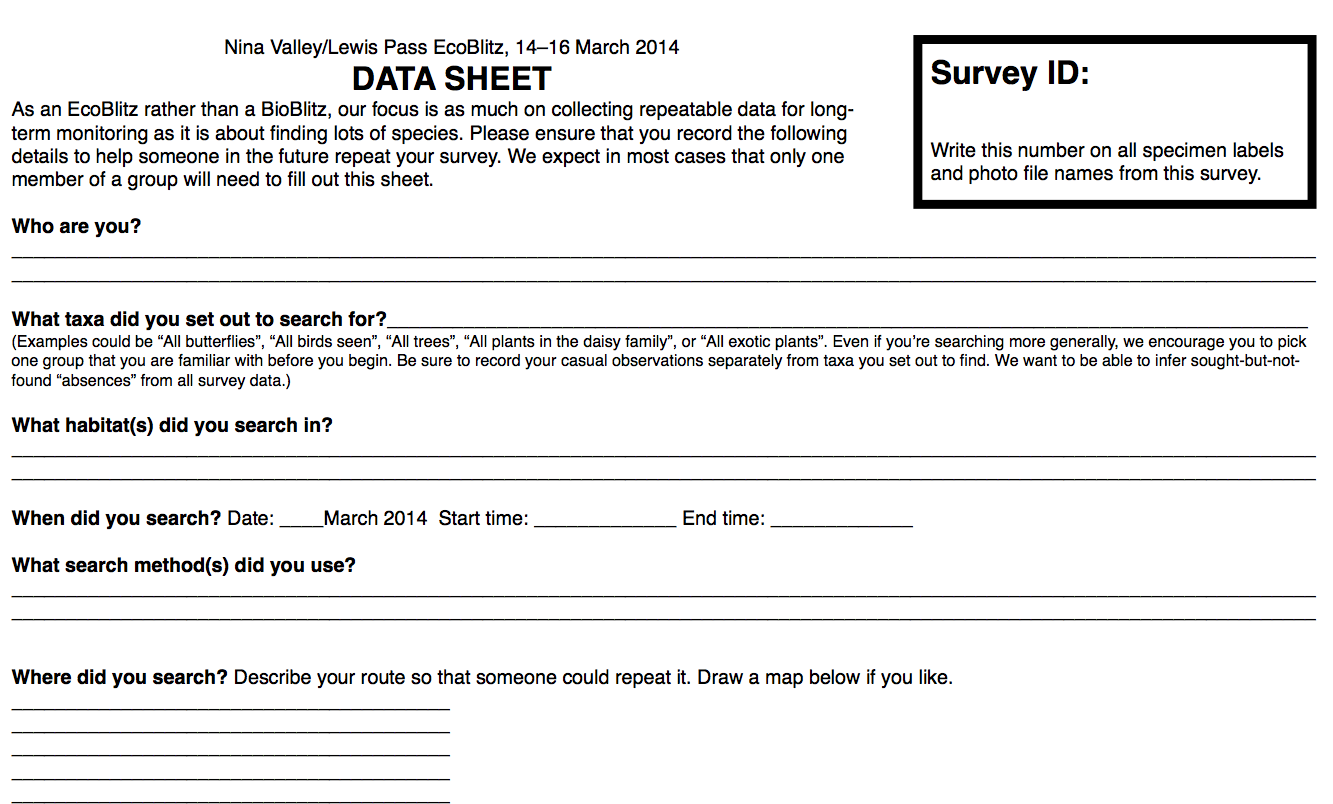RECENT ARTICLES
- CEBRA: An optimised and standardised sampling protocol for BioBlitz
- Stop it people, the plural of anecdote IS data!
- That's no pollinator, that's a flower visitor
- Add a scale to your macro photos
- What to photograph when counting the wild
- Imagine counting the wild on EVERY street in a city!
- My wild counting workflow
- A butterfly flew through
- Why iNaturalist observations without photos can be research grade
- Why you shouldn’t use a spreadsheet for data entry
- All articles ...
Go beyond species lists in your surveys and BioBlitzes. Tweak One: document your effort
One of four tweaks to surveys and BioBlitzes that make them useful for long-term monitoring.
written Jun 9, 2018 • by jonsullivan • Category: Wild Counting

This article is one in a series about four simple tweaks you can make to your surveys and BioBlitz events that will make them much more useful for long-term monitoring.
Tweak One: document your effort
Tweak Two: subdivide your effort
Tweak Three: how much did you overlook?
Tweak Four: how often did you misidentify?
Tweak One: document your effort
You’ve decided to look for a certain set of species. Maybe it’s all birds. Maybe it’s all vascular plants. Maybe it’s the species in a certain group of daisies that you like. You go to a site, perhaps with some friends and colleagues, and you make a list of all the species you find. All done? No, there’s something important missing: your effort.
It’s important to accurately document the effort you used when surveying for your species list. Only that allows others to repeat your exact survey in later years. “Effort” here means the where and when, for how long, by how many people, with what expertise, looking for what species, using what survey methods, and in what conditions (like the weather).
I’m surprised at how infrequently these details are recorded with species lists. Smart phones these days all have an inbuilt GPS and can make a GPS track of exactly where, and when, people were searching at a site. That is invaluable for repeating a survey. A hand drawn map can still be useful but it shouldn’t replace a proper GPS track.
Noting the survey method(s) that were used could be nothing more than stating that the species were searched for without any specialist equipment. If more sophisticated methods and equipment were used, note them down next to the species those methods detected.
Similarly, be sure to write down who did the survey, ideally with a note about their expertise at finding and identifying the species you were looking for. In a BioBlitz event, that could just be a note of how many members of the public accompanied an expert on a particular search, and who that expert was.
These are all straightforward to do, and make your species list vastly more useful. It can take a little more coordination to gather this information when a survey is being done by many people. You get so much better data out of it that it’s well worth the small extra effort (pun intended).
